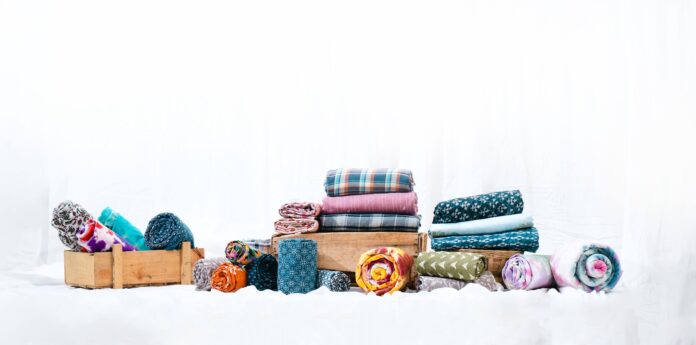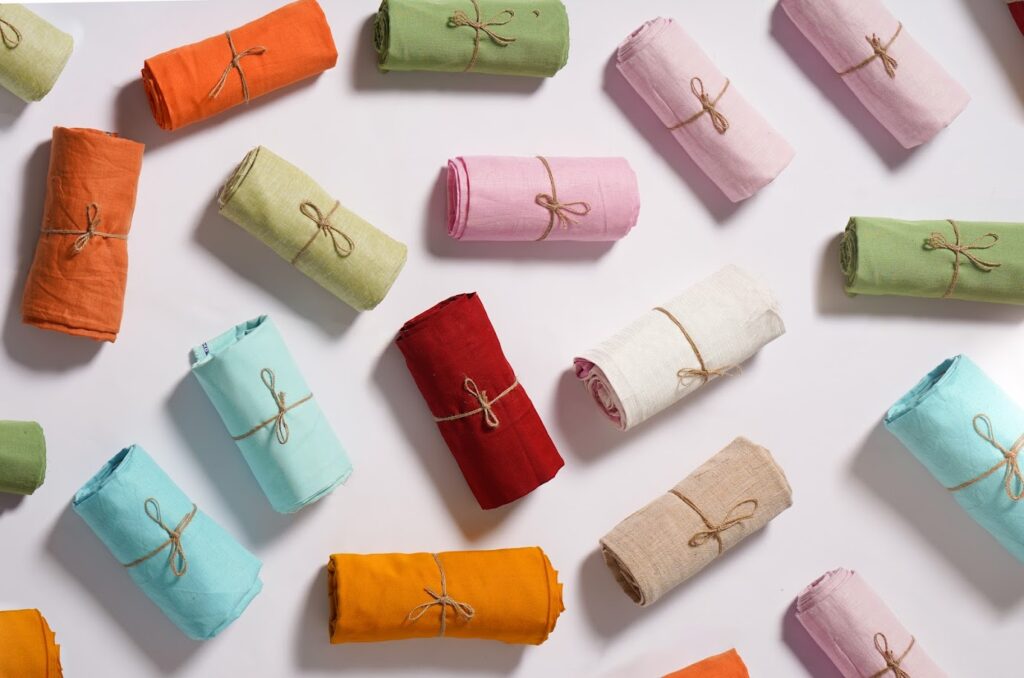
The United Arab Emirates (UAE) has a diverse variety of attractions, fabric, and shopping options, but its textile industry is mostly underdeveloped.
The possibilities are practically limitless, ranging from crisp, striped cotton ideal for fitted blouses to extravagant laces ideal for show-stopping dresses. A novice cloth shopper may be intimidated by the work at hand.
For those who have never seen the souq-style passageways of ancient Dubai and believe that cloth is always sold at full price, here is a quick primer.
Two of the most well-known textile areas in the UAE are Naif Souq and Satwa in Deira, Dubai, and Hamdan Centre and Madinat Zayed Shopping Centre in Abu Dhabi.
Fabric stores
A stretch of fabric stores flanks Al Satwa street, offering a dazzling choice of fabrics and designs. However, numerous Textiles may be found by searching for them on Google Maps. Narendra Devnani, the proprietor, has been in business for 25 years and believes that his large assortment of cotton textiles has drawn many regular clients. Although the great majority of his customers are Arab ladies looking for abaya material. He also sees individuals of all nationalities and origins.
How does it work?
Most people are looking for a cloth to utilize in the outfits of the performers. Velasquez visits Champion to check at their assortment of off-white laces and linings for their most recent show, Phantom of the Opera.
We have to build our own clothing most of the time, although we do receive ready-made performances every now and again. Whereas, Velasquez simply purchases the cloth here and takes it to a tailor down the street.
She gives the seller a photo of a lace dress she spotted online in order for him to better understand what she is looking for. He shows off the outfit’s extra lacework and satiny understructure.
Material sellers are often well-informed and eager to help. Yes, their purpose is to earn a profit. But listening to their advice might help you choose the ideal fabric for your next project.
Whether you’re attempting to construct tailored jeans, a flowing dress, or a saree, photos and thorough instructions will go a long way. The merchants can help you determine how much cloth you’ll need. They may attempt to sell you an extra meter or two, but it’s better to be safe than sorry if there are problems with the tailor.
One couple goes to Champion to buy high-quality denim to manufacture pants. Even though they are positive they do not need more than two meters, the salesperson pushes on them to purchase an additional half meter.
Pricing
Bargaining is anticipated at practically every fabric shop in the Middle East. Prices may seem reasonable from the outside, but stores nearly always give additional discounts.
The idea is to behave disobediently while seeming to be interested in a certain fabric. You may even have to take a few steps towards the exit before a salesperson will give you a discount. However, they will likely refer to it as a “special price” in low tones so that no other customers notice.
Don’t be frightened off by a “fixed price” sign; it’s merely there to prevent merchants from offering discounts.
It is wise not to hurry into a purchase without giving it careful consideration. In reality, salespeople will often offer you a drink, whether it’s tea or water, particularly if you’re making a major purchase.

Fabric Guide
Cotton
The breezy flow and lose fit of this fabric are ideal for shirts, skirts, light jackets, wide-leg trousers, and summer clothing.
A basic meter costs around Dh20-25.
Silk
Ideal for wearing celebration wear, skirts, and dresses. Moreover, a typical meter will cost approximately Dh25-27 (for silk blend fabrics, not pure silk).
Chiffon
In most circumstances, transparent panels, skirts, and dresses should be lined.
A typical meter costs around Dh15-20 (for mixed chiffon fabrics, not pure)
Tweed
It looks fantastic with blazers, shirts, and pencil skirts.
The average price meter is Dh25-27.
Trims
Necklines and hemlines may be improved.
Lace costs around Dh10-15 for thin, plain lace and Dh200-250 for ornate, hand-worked decorations.
Embellishments
Ideal for: freshening up your clothes with anything from colorful buttons to glistening gems.
Prices range from Dh10-15 for simple buttons to Dh80-90 for complex appliqués with gems.
Tip
Many fabric textiles establishments have a little bin by the front door or near the checkout area that is filled with scraps from prior purchases.
Fabric scraps ranging from half a yard to three to five yards are insufficient to produce a whole garment. However, they are ideal for panels, accents, and trimmings, as well as tablecloths or table runners. Dh5, Dh10, and Dh20 are common selling prices.






